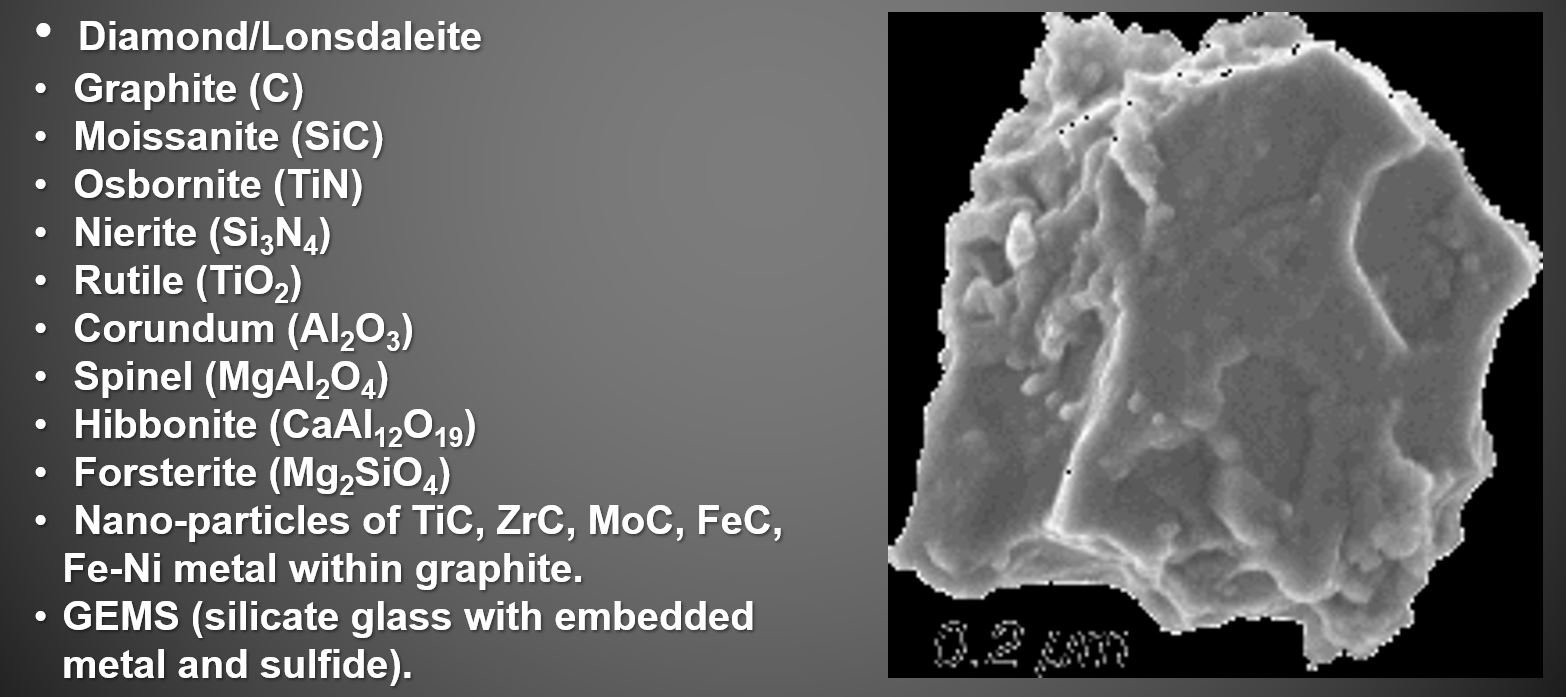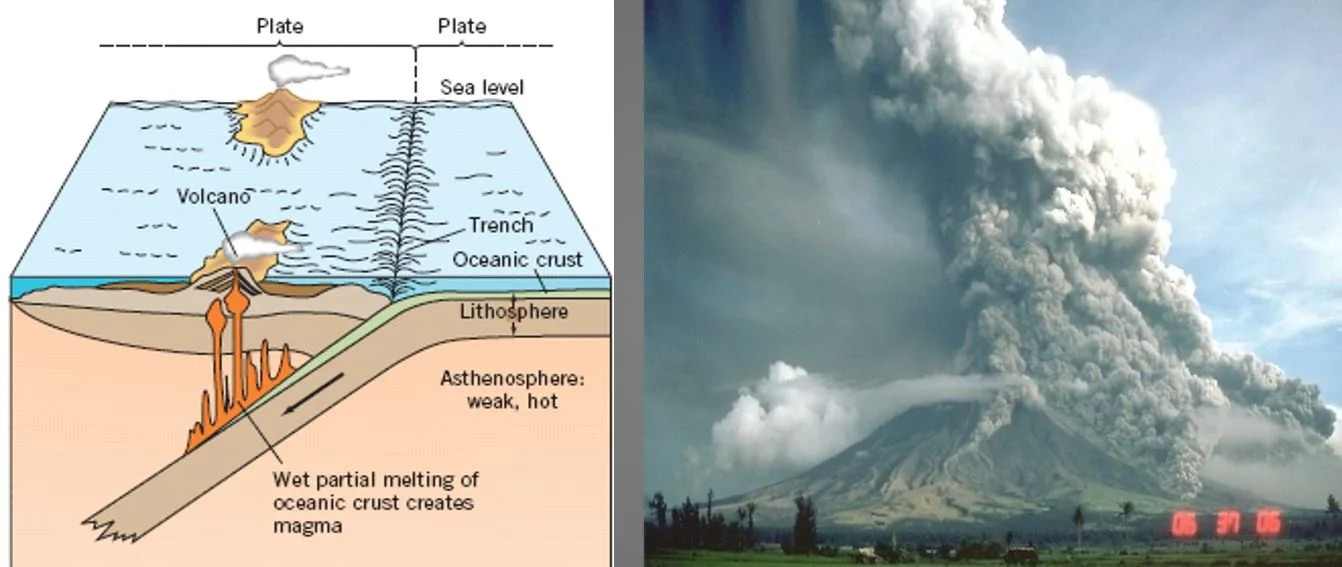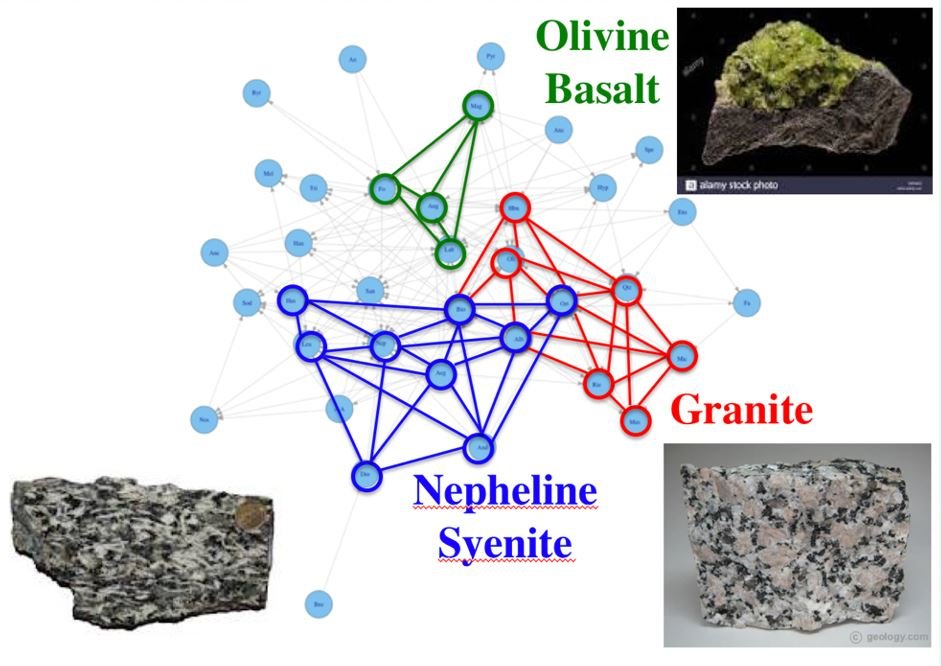Bob Hazen on the Evolution of Minerals
Listen to the podcast here or wherever you listen to podcasts.
Bob Hazen is Senior Staff Scientist at the Earth and Planets Laboratory of the Carnegie Institution for Science and Professor of Earth Sciences at George Mason University. At a Christmas party in 2006, a well-known biophysicist asked him the question: “Were there clay minerals in the Archean?” Apparently, nobody had given this much thought prior to 2006. The topic quickly became the focus of his research, rapidly blossoming into a whole new branch of mineralogy.
Podcast Illustrations
Images courtesy of Bob Hazen unless otherwise indicated.
In 1850, James Dwight Dana developed a classification of minerals based on chemistry and structure. Today’s mineral classification system as standardized by the International Mineralogical Association (IMA) is still based on mineral chemistry and structure.
The Stages of Mineral Evolution
In 2008, Bob Hazen and his collaborators proposed that the Earth’s mineralogical diversity has increased through 10 stages.
Hazen et al. (2008), American Mineralogist 93, 1693
Stage zero
Pre-solar grains contain about 20 mineral phases.
Stage 1
This stage occurred in the stellar nebula prior to planetary accretion about 4.56 billion years ago, when presolar “dust bunnies” were melted into droplets called chondrules by the early Sun. These droplets accumulated in the earliest generations of meteorites, called chondrites. Unaltered chondritic material with approximately 60 different refractory (high melting point) minerals represents the starting point of the mineral evolution of all planets and moons in the Solar System. A cumulative total of about 90 minerals were now present.
Stage 2
About 300 new minerals appeared in the Hadean 4.55 billion years ago by alteration of planetesimals by heat, water, and impact. Examples of these earliest igneous minerals include feldspars, quartz, micas, clays, zircon, and calcite. Differentiation of planetesimals into a rocky mantle and an iron-rich metal core also formed new minerals. The image shows a section through a pallasite meteorite with co-existing olivine crystals (rocky) and metal (core), exemplifying on a small scale the process of mantle/core differentiation.
Stage 3
By the time a dry planet had formed, about 300 minerals were present. This is the endpoint for the Moon and for Mercury.
Stage 3 (continued)
When water appeared on the Earth between 4.55 and 4.35 billion years ago, about 450 mineral species formed, including hydroxides and clays. Thus, the answer to the question put to Bob Hazen by Harold Morowitz in 2006 — “Were there clay minerals in the Archean?” — is “yes.”
Stage 3 (continued)
Once the oceans dried up on Mars, new mineral formation may have stopped, leaving Mars with just 450 minerals. These include minerals formed by volcanic processes, outgassing, surface hydration, evaporation, and freezing.
Stage 4
Granite formed through partial melting of basalt and/or sediments. New mineral species include pegmatites. At 3.5 billion years ago, more than 1,000 mineral species had formed. Top left: granite; bottom left: a simple pegmatite vein in quartz with large crystals of quartz and feldspar; center left: spodumene, a lithium mineral (courtesy of Rob Lavinski); center right: tourmaline, a boron mineral (courtesy of Rob Lavinski); and right: beryl (courtesy of Ron Lavinski).
Stage 5
More than 3 billion years ago, plate tectonics started, creating new modes of volcanism. About 3,000 minerals were present at this stage.
Stage 5 (continued)
Massive base metal deposits are created as a result of near-surface mineralization processes accompanying plate tectonics. The most abundant base metals are copper, lead, nickel, tin, aluminum, and zinc. About 1,100 new mineral species were formed by these processes.
Stage 5 (continued)
Regional and high-pressure metamorphic suites are formed at plate boundaries. Metamorphic rocks include blueschists, granulites, and ultra-high pressure phases. The inset at right is the classic diagram showing the loci in pressure-temperature space of the various mineral assemblages formed under similar pressures and temperatures, which are known as the metamorphic facies.
Stage 6
Earth’s chemical and physical processes resulted in about 3,000 minerals species. The remaining ~2,700 co-evolved with life. The figure shows the five key roles played by minerals and life forms during the course of this co-evolution: catalyst, reactant, template, container, and scaffold.
Stage 6 (continued)
An anoxic biosphere existed in the Archean from 4 to 2.5 billion years ago, producing carbonates (left) and banded iron formations (right).
Stage 7
In the Paleoproterozoic (2.5-1.85 billion years ago), the oceans and atmosphere became oxygenated during the Great Oxygenation Event resulting from the rise of oxygenic photosynthesis. The number of mineral species rose to over 5,000 with about 2,000 new oxide, hydroxide, and carbonate minerals.
Stage 8
From 1.85 to 0.85 billion years ago, an “intermediate ocean” existed with an oxygen-rich surface region and deep-ocean anoxia with sulfate-reducing microbes. Few new mineral species formed at this stage.
Stage 9
Between 850 and 542 million years ago there were at least two periods of almost complete glaciation (the Snowball Earth) and further oxidation. Few new species formed at this stage.
Stage 10
In the Phanerozoic Eon (542 million years ago to the present), new minerals were formed through biomineralization and the rise of the terrestrial biosphere, bringing the total number of mineral species up to its present-day value of about 5,700.
Mineral Network Graphs
Mineral network graphs provide an interactive way to explore relationships among groups of minerals. Minerals are plotted in a multi-dimensional space that includes the traditional axes of chemical composition and crystal structure, but also newly added mineral characteristics such as minor and trace element content, isotope content, fluid and solid inclusions, size, shape, optical properties, and magnetic properties. The networks are projected into a 2D or 3D space that best reveals the clustering in the so-called natural kinds.
A graphical representation of the relationships between all known mineral species and their modes of formation on Earth and other bodies in the Solar system. In this network, each mineral is represented by a brown dot with a link that connects it to a node that represents its mode of formation (paragenetic mode). Minerals having only a single paragenetic mode have only a single link and appear at the outer edges of the network, while those with many paragenetic modes are densely linked and appear near the center. Although Bob Hazen and his team identified a total of 57 paragenetic modes, the modes fall into 11 paragenetic mode groups. It is these groups that are shown in this network, with the legend on the left.
Lumping and Splitting
In the new mineral system, diamond, which is a single mineral species according to the IMA classification, is split into five natural kinds, principally based on the formation environment. In the case of diamond, the principal formation environments are stellar envelopes, the mantle, and meteor impact sites.
Pyrite is a single IMA mineral species, but is split into as many as 21 natural kinds.
Tourmaline has over 30 different IMA species. But the clustering of the mineral network suggests they can be lumped into a much smaller number of natural kinds.
The amphibole group has over 100 IMA species, but the mineral network graph suggests they can be lumped into just a handful of natural kinds.

























